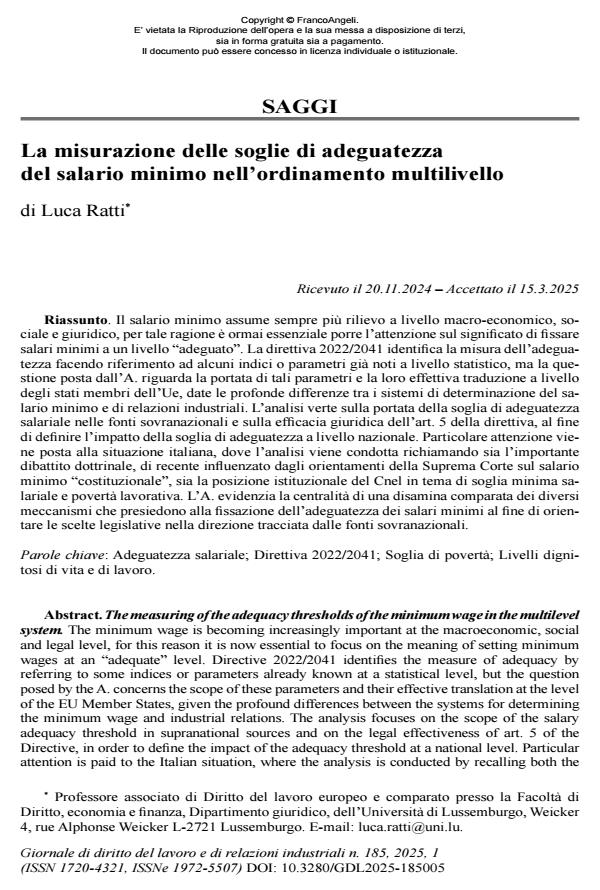The new paid leave for disasters or adverse weather events and other short-term measures introduced in Spain after the DANA of 29 October 2024.
Journal title GIORNALE DI DIRITTO DEL LAVORO E DI RELAZIONI INDUSTRIALI
Author/s Luca Ratti
Publishing Year 2025 Issue 2025/185
Language Italian Pages 6 P. 57-62 File size 220 KB
DOI 10.3280/GDL2025-185005
DOI is like a bar code for intellectual property: to have more infomation
click here
Below, you can see the article first page
If you want to buy this article in PDF format, you can do it, following the instructions to buy download credits

FrancoAngeli is member of Publishers International Linking Association, Inc (PILA), a not-for-profit association which run the CrossRef service enabling links to and from online scholarly content.
The minimum wage is becoming increasingly important at the macroeconomic, social and legal level, for this reason it is now essential to focus on the meaning of setting minimum wages at an “adequate” level. Directive 2022/2041 identifies the measure of adequacy by referring to some indices or parameters already known at a statistical level, but the question posed by the A. concerns the scope of these parameters and their effective translation at the level of the EU Member States, given the profound differences between the systems for determining the minimum wage and industrial relations. The analysis focuses on the scope of the salary adequacy threshold in supranational sources and on the legal effectiveness of art. 5 of the Directive, in order to define the impact of the adequacy threshold at a national level. Particular attention is paid to the Italian situation, where the analysis is conducted by recalling both the important doctrinal debate, recently influenced by the orientations of the Supreme Court on the “constitutional” minimum wage, and the institutional position of the CNEL on the minimum salary threshold and working poverty. The A. highlights the centrality of a comparative analysis of the different mechanisms that govern the setting of the adequacy of minimum wages in order to guide legislative choices in the direction traced by supranational sources.
Keywords: Wage adequacy; Directive 2022/2041; Poverty threshold; Decent living and working standards.
Luca Ratti, La misurazione delle soglie di adeguatezza del salario minimo nell’ordinamento multilivello in "GIORNALE DI DIRITTO DEL LAVORO E DI RELAZIONI INDUSTRIALI " 185/2025, pp 57-62, DOI: 10.3280/GDL2025-185005